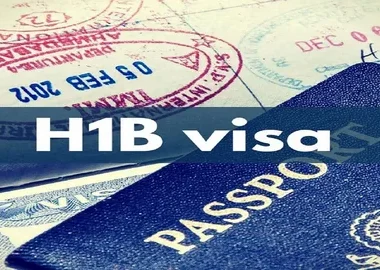A job interview can be one of the most nerve-wracking experiences, but with the right preparation, you can walk in with confidence and make a lasting impression. Whether you’re entering the workforce for the first time, switching careers, or looking to advance in your current field, acing a job interview is crucial to landing your dream job.
In this comprehensive guide, we’ll walk you through essential steps on how to prepare for a job interview. From researching the company to preparing for common questions, we’ve got you covered.
Step 1: Research the Company
One of the most important steps in interview preparation is researching the company. Understanding its mission, values, culture, and recent developments will allow you to tailor your responses and show that you’re genuinely interested in the role. Here’s what to focus on during your research:
1.1 Company Overview
Start by reviewing the company’s website. Look for the About Us section, and familiarize yourself with its mission statement and core values. Be sure to understand the industry it operates in and its position within that industry. If the company has multiple locations, learn where its offices or stores are located.
1.2 Products and Services
Know the products and services the company offers. Familiarize yourself with their most popular offerings, any recent launches, and how these products/services benefit their customers.
1.3 Recent News
Staying up-to-date with the company’s latest news is vital. Look for press releases or any media coverage that could help you understand where the company is headed, what challenges it’s facing, and how it’s responding to industry trends.
1.4 Company Culture
Learn about the company’s culture and work environment. This information can often be found in the “Careers” section of the website or through employee reviews on platforms like Glassdoor or Indeed. Understanding the company culture will help you tailor your responses to show that you align with their values.
Step 2: Understand the Job Description
Carefully read the job description to understand the qualifications, responsibilities, and skills required for the position. Highlight the key qualifications the employer is looking for, such as specific skills, experience, or certifications. Be prepared to demonstrate how your skills match the job requirements.
2.1 Key Responsibilities
Make a list of the main responsibilities listed in the job description. For each one, think about how your past experiences align with these duties and how you can contribute to the company’s goals.
2.2 Skills and Qualifications
Make sure you understand the specific skills required for the position. If the job requires technical skills or certifications you don’t yet have, take the time to familiarize yourself with them. You don’t need to be an expert, but it helps to show that you’re willing to learn and adapt.
2.3 Preferred vs. Required
Understand the difference between required and preferred qualifications. Required qualifications are essential for the job, while preferred qualifications are nice-to-haves but not necessarily deal-breakers. Focus your preparation on the required qualifications, but feel free to highlight any relevant preferred qualifications you may possess.
Step 3: Practice Common Interview Questions
While every interview is different, there are a few common questions that are likely to come up during the interview. Prepare for these questions in advance so you can answer confidently and thoughtfully.
3.1 Tell Me About Yourself
This is often the first question you’ll be asked, and it’s your chance to make a strong first impression. Craft a brief narrative about your background, key accomplishments, and why you’re excited about the opportunity. Focus on your professional experience and how it aligns with the job you’re applying for.
3.2 Why Do You Want to Work Here?
This question tests whether you’ve done your homework and understand the company. Use your research to demonstrate that you’re genuinely interested in the company’s mission and how you can contribute to its success.
3.3 What Are Your Strengths and Weaknesses?
For strengths, mention specific skills that are relevant to the job. For weaknesses, be honest but frame them in a way that shows how you’re working on improving them. For example, you might mention how you’ve been improving your time management or communication skills.
3.4 Tell Me About a Challenge You’ve Overcome
This question assesses your problem-solving abilities. Choose an example that demonstrates your ability to handle challenges, whether they are related to teamwork, deadlines, or specific projects. Focus on the steps you took to overcome the obstacle and what you learned from the experience.
3.5 Where Do You See Yourself in Five Years?
Employers want to know if you have long-term goals and whether those goals align with the company’s direction. Talk about your career aspirations and how this role fits into your larger career path.
Step 4: Prepare Your Own Questions
At the end of the interview, you’ll usually be asked if you have any questions. This is an opportunity for you to learn more about the company and show that you’re seriously considering the role. Asking insightful questions also demonstrates your engagement and preparedness.
Here are a few examples of questions you can ask:
- What does a typical day look like for someone in this role?
- How do you measure success in this position?
- What opportunities are there for professional development and growth?
- How would you describe the company culture?
Avoid asking questions that are easily answered on the company’s website, such as “What does the company do?” or “What’s the salary for this position?” instead, focus on questions that show you’re considering how you can contribute and grow with the company.
Step 5: Prepare Your Documents
Ensure you have all necessary documents ready and well-organized for the interview. These may include:
- A printed copy of your resume: Even if you’ve submitted your resume online, it’s a good idea to bring a physical copy to hand to the interviewer.
- References: Have a list of professional references prepared in case the interviewer asks for them.
- Portfolio or work samples: If the job requires a portfolio or samples of your work (e.g., for creative or design roles), bring them along in a neat and organized format.
- Questions for the interviewer: Have your list of insightful questions prepared so that you can ask them when prompted.
Step 6: Dress Appropriately
What you wear to the interview can make a significant impact on how you’re perceived. Always dress in a way that reflects the company’s culture. In general:
- Business casual is usually safe for most corporate jobs.
- Business professional may be expected for more formal positions, such as in finance or law.
- Casual attire might be appropriate for some startup or creative roles, but it’s still essential to look neat and well-groomed.
Step 7: Get Ready to Make a Good First Impression
On the day of the interview, ensure that you:
- Arrive early: Arriving 10-15 minutes before your scheduled interview time shows punctuality and enthusiasm.
- Smile and greet the interviewer confidently: A firm handshake, a smile, and a friendly demeanor go a long way in establishing rapport.
- Maintain good posture: Sit up straight and make eye contact throughout the interview. This shows that you’re engaged and confident.
- Be positive and enthusiastic: Stay upbeat, even when discussing challenging experiences. Positivity can leave a lasting impression.
Step 8: Follow Up After the Interview
After the interview, it’s essential to send a thank-you note or email to express your gratitude for the opportunity and reiterate your interest in the position. This simple gesture shows professionalism and courtesy.
Your thank-you note should:
- Thank the interviewer for their time.
- Express enthusiasm about the position and company.
- Highlight a specific part of the interview that you found particularly interesting or exciting.






